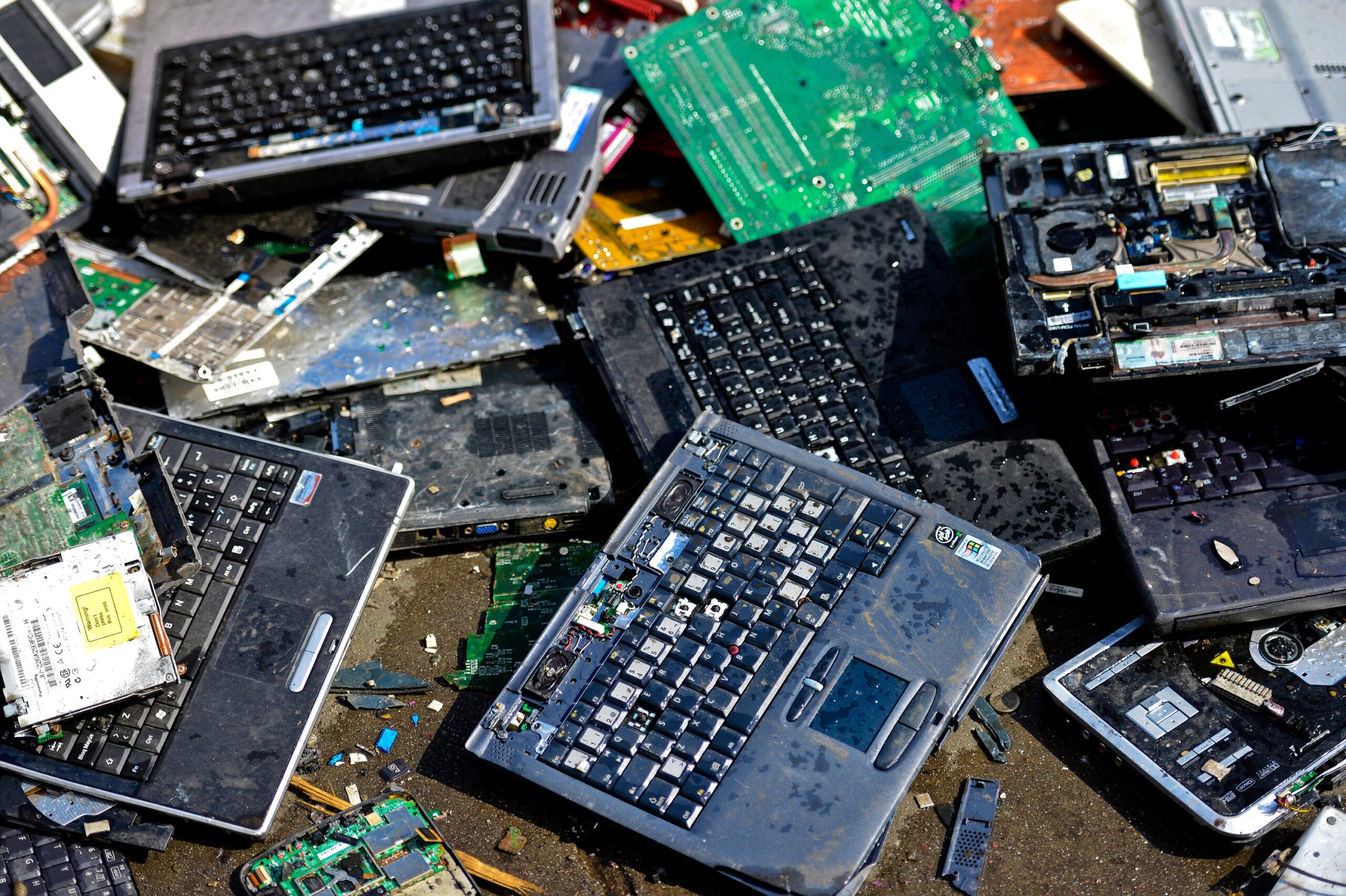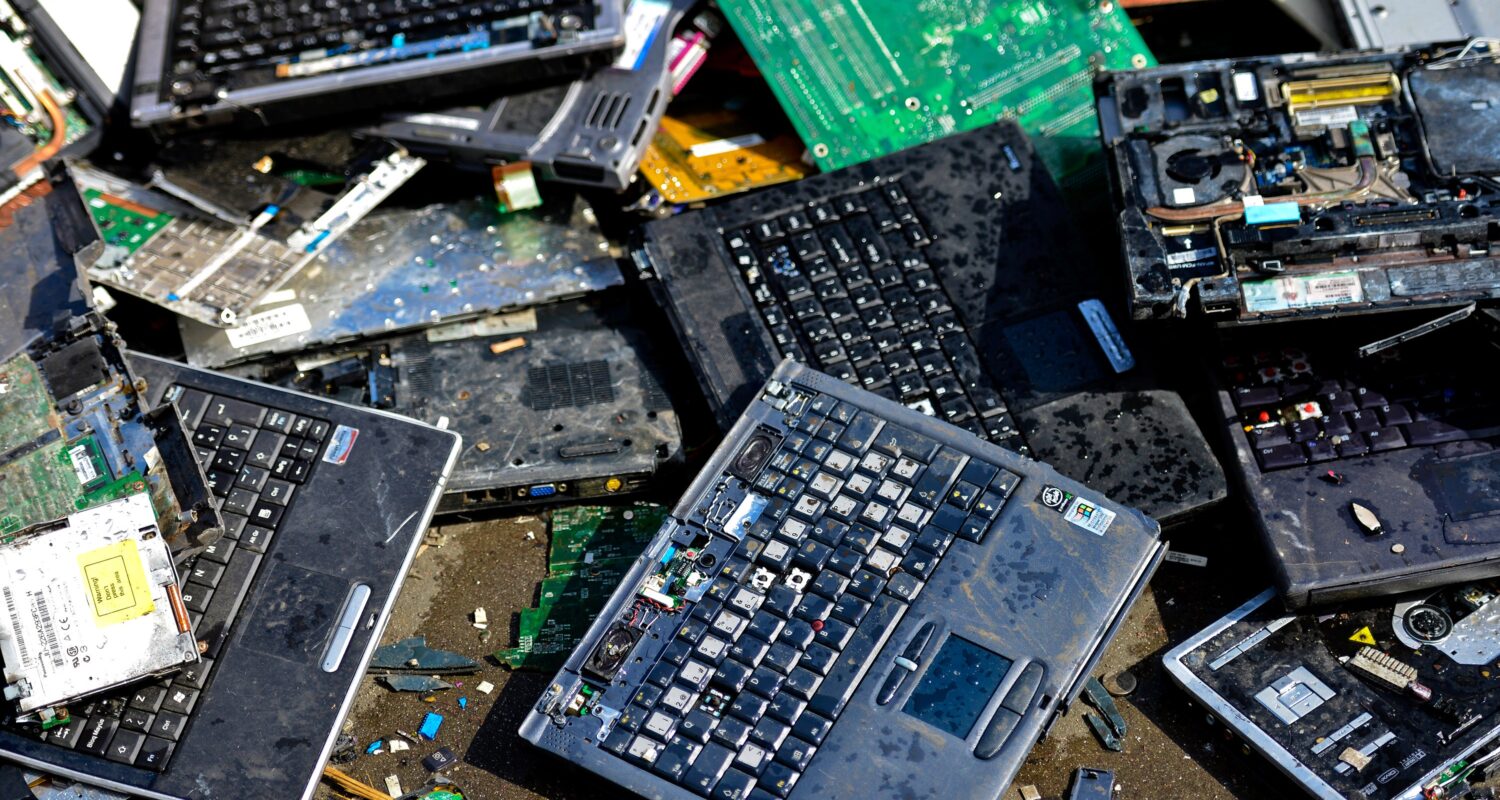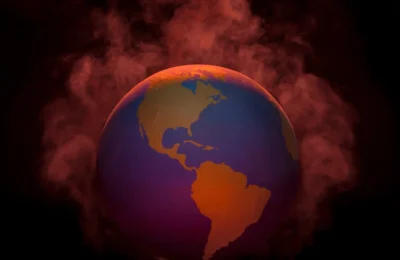An important article which raises a number of points about sustainability and our future metals needs, from ABC News.
 If you had a tonne of ore from a gold mine, and a tonne of iPhones, which is likely to contain more gold? What about silver?
If you had a tonne of ore from a gold mine, and a tonne of iPhones, which is likely to contain more gold? What about silver?
You’ve probably guessed the reason for the question is that the answer is surprising. And yes, in both cases, it’s the devices that are a richer source of the precious metals.
In fact, the metals for all Tokyo Olympic and Paralympic medals came from recycled e-waste.
Over two years, the organisers gathered enough gold, silver and bronze from small electronic devices to make the almost 5,000 medals awarded to the athletes.
And it’s not just our computers and phones.
Everything from electric cars to wind turbines and solar panels — things we need to transition the world to net-zero emissions — require an array of metals, like silver, palladium, platinum, copper, aluminium and rare-earths, such as neodymium.
So where will we get them from? Will we have enough? And what role can recycling and reuse play in ensuring we can supply our technology needs into the future?
How much are we talking about?
With the US under Joe Biden aiming to have its electricity sector “carbon-pollution free” by 2035, the nation is already ramping up a suite of clean energy projects.
Last week US Wind Inc put in a bid to build up to 82 wind turbines off the coast of Maryland to supply the grid with an extra 1.2 gigawatts of power.
That’s part of a plan to install enough wind turbines to supply the US with 30 gigawatts — enough to power 10 million American homes — by 2030.
Each wind turbine contains several hundred tonnes of materials, including anywhere between 2.4 and 6.7 tonnes of copper per megawatt, including the distribution and collector cables, according to the Copper Alliance.
Other metals in turbines include steel, aluminium and iron, as well as cobalt and rare-earths.
And those figures are just to supply a fraction of the US grid’s power.
Natural resource and mining consultancy Wood Mackenzie estimated in 2019, before the Biden administration ramped up climate goals, that globally we’d need more than 5.5 million tonnes of copper to build wind turbines alone over the following 10 years.
For reference, Australia’s entire annual copper exports are under 1 million tonnes.
And the amount of copper-per-megawatt in solar power plants is only marginally less than wind.
Then there are the world’s cars. Scientists agree that to limit catastrophic climate change, we need to get to net-zero emissions globally by 2050 at the absolute latest — ideally, well before then.
That means a transition to 100 per cent electric vehicles.
But of the roughly 63 million cars sold worldwide in 2020, less than 5 per cent were electric.
When we start to consider all the metals involved — nickel, cobalt, lithium, rare-earths and silver among them — to build the world’s electric vehicles, solar panels, smart phones, computers and batteries, the numbers start to get pretty staggering.
Will we run out?
Broadly, we can think about two categories of metals: major metals that we already mine and use in large quantities, and the more niche metals, such as cobalt and rare-earths.
Major metal supply probably won’t be an issue, according to Eleonore Lebre of the Sustainable Minerals Institute at the University of Queensland.
“In terms of mining, you will require much more mining of major metals because the [demand is] much higher,” Dr Lebre said.
But supply could become an issue for the more niche metals, said Richard Corkish, a solar energy researcher at UNSW.
“If we’re really going to replace the world’s fossil fuels, then really dramatic [niche metal] production is going to take place, much more than recently,” Dr Corkish said.
He said solar technology uses a lot of silver, as well as a very niche type of low-iron sand to achieve its highly transparent glass.
“The industry is learning to use less silver, but [solar] production is expanding.
Given that renewable energy supplied just over a quarter of Australia’s energy mix in 2020, Australia alone is going to have to roughly quadruple the capacity of its clean energy infrastructure (including hydro-electricity and battery storage) to get close to net-zero.
Dr Lebre said that rather than supply, she’s more worried about the impact that such intensive mining will have on the environment and vulnerable societies.
“I am not really concerned about the supply itself. I’m concerned about the consequences,” she said.
“At the moment, the way mining is done, they’re not very good at working with local communities and what they do with the mine itself after it closes.
“That’s the problem.”
Where do our metals come from now?
Currently, most of the world’s copper comes from Chile, followed by China and Peru, according to Australian minerals exploration company Taruga.
Cobalt, which is in many batteries including those from leading electric car manufacturers, mostly comes from Democratic Republic of Congo (DRC), where child labour and other human rights abuses, as well as environmental degradation, are rife.
However, Tesla CEO Elon Musk last year announced a move away from using cobalt in the company’s car batteries, although it’s still used in many smartphones and other battery-powered devices.
One of the leading battery alternatives to cobalt is nickel, with the largest reserves of nickel lying in Indonesia and Australia, according to the US Geological Survey.
Then there are rare-earths — elements like neodymium and yttrium which we use in smartphone displays, LED lights, flat-screen televisions and computer displays.
The lion’s share of rare-earth reserves are in China.
“China is very much keeping a monopoly over rare-earths,” Dr Lebre said.
“If they wanted to constrain supply they could. There have been other countries that have done stuff like that.”
But across China and inner Mongolia, rare-earth mining has left behind toxic tailings dams and evaporation ponds. In some cases, they have overflowed into waterways and leached into groundwater.
There are significant rare-earth reserves in Australia too.
Although Australia has stricter environmental compliance than countries such as China, mining here can still have significant environmental impacts.
An Australian company, for instance, has run into local opposition in Malaysia. That company mines rare-earth ores in Western Australia and exports them to Malaysia, where their processing leaves behind slightly radioactive waste.
If mining of rare-earths and other metals such as lithium and copper is going to expand in Australia, Dr Lebre said the industry as a whole needs to improve its environmental accountability.
“In Australia, you have tens of thousands of abandoned mines — abandonment of mines still happens now. You have mines that are put on ‘care and maintenance’ and that’s it.”
What’s the role of recycling?
There’s a pervasive myth that renewable energy technologies like solar panels can’t be recycled.
Like most myths, it’s based on a kernel of truth, according to Dr Corkish.
The difficulty in recycling solar panels comes down to the clear coating that encapsulates the panels — ethylene vinyl acetate.
However, there are several methods — thermal, chemical and mechanical — of removing this coating.
The major issue though, especially as the cost of solar panels continues to drop, is that it’s cheaper to buy new panels than recycle the old ones.
The solution, as is the case with recycling many types of materials, needs to be policy-driven.
There are plenty of models to achieve this, including a levy scheme already being used in Europe, Dr Corkish said.
Although our initial transition to clean energy can’t be achieved through recycling alone, reusing those materials once they’ve been dug up will be crucial to achieving any sort of sustainable future, according to Veena Sahajwalla from the University of New South Wales.
Professor Sahajwalla’s team at the Centre for Sustainable Materials Research and Technology (SMaRT) has developed e-waste “microfactories” which, she says, can be rolled out at a community scale for local resource recovery.
“Technologies developed and being developed by the SMaRT Centre can recycle and reform many of the materials from electronic waste that contain copper, manganese, zinc, gold and various rare-earth elements,” Professor Sahajwalla said.
Professor Sahajwalla is one of many advocates of a transition to a circular economy — where the costs of recycling are factored into the cost of production and we move away from a linear model of putting constant pressure on virgin materials.
“With the growth in electric vehicles, wind turbines, domestic solar systems, and so many batteries … it is often overlooked that almost all of the materials needed to electrify our world are finite in supply.”
Other options to recycling include repurposing, such as installing electric car batteries into home storage systems once they’re no longer viable in vehicles.
Fundamentally, though, if we’re going to achieve any sort of environmentally sustainable, socially responsible future, we must consume less in the first place.
Second, according to Professor Sahajwalla, is to reimagine the concept of “waste”.
“New government policies pleasingly include rare-earths (such as neodymium found in computer hard drives) as a national priority and there is also a renewed focus across all levels of government to better manage our waste, recycling and manufacturing resources.”



